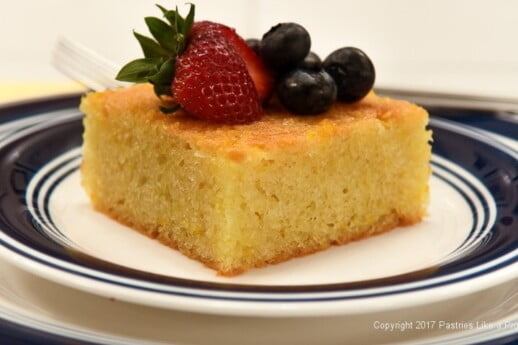
Greek Orange Yogurt Cake or Portokalopita as it is known in Greece first came to my attention when reading a post by David Lebovitz writing about Tinos Greece.
Of course, I immediately started searching for the dessert and came up with what I thought to be the most authentic version of this Greek Orange Yogurt Cake based on the fact it was from Greece and its use of phyllo and a soaking syrup. Many Greek desserts are finished with a soaking syrup that often contains cinnamon sticks and cloves.
The photograph of this cake, so moist you can almost taste it, made it a must try. My love of phyllo is best expressed in my post on Baklava as my mother made it. Watching my mother and grandmother make this thinnest of doughs has fascinated me all my life - and still does.
While there are other versions of Greek Orange Yogurt Cake on the internet, they all use flour as their base. What makes this so unusual is the use of dried phyllo instead of flour and no eggs. While the original recipe I followed was a translation, I think some things may not have come out quite right - in particular, the instructions for drying the phyllo. I once wrote a book using phyllo in many forms from appetizers to desserts and everything in between. One chapter dealt with dried phyllo.
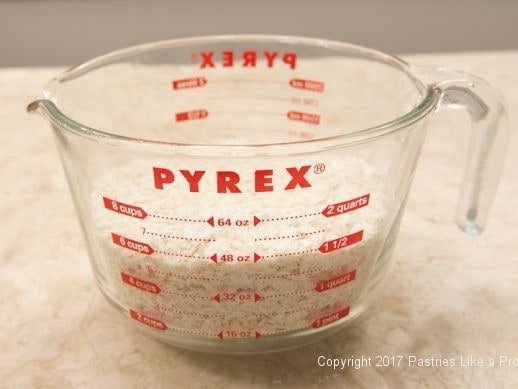
I have to say the recipe itself is rather strange in its makeup. There are no eggs to bind it and it uses 4 teaspoons of baking powder, which I thought was a lot. However, when I measured the dried, crushed phyllo, there was 6 cups or 400 grams or 14 ounces. So it wasn't so much after all.
This Greek Orange Yogurt cake is moist but not soggy and gets better the longer it sits. While the original recipe suggested keeping it refrigerated as it would crumble easily if kept at room temperature, I found no such problem. It is the flattest cake I have ever made, it cuts cleanly and easily and is addictive, to say the least. It is full of flavor and not too sweet.
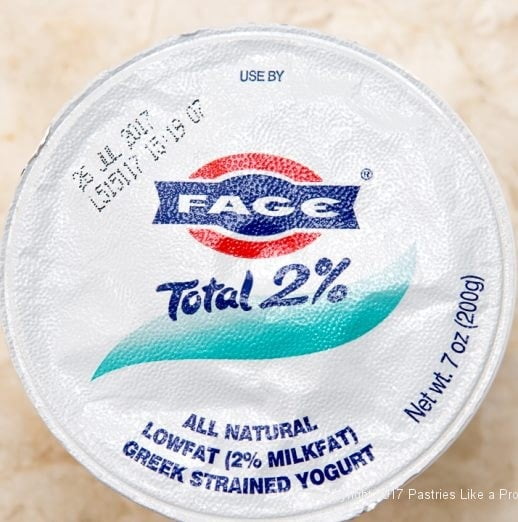
2% Greek yogurt was called for and I found Fage had a 7-ounce container which was exactly what I needed. Other brands may be substituted - this is the first one I found.
It is great as a dessert but equally good as a breakfast offering with fresh fruit which can be sweetened slightly if desired.
While unusual, this Greek Orange Yogurt Cake is one of the easiest I have encountered using only a few measuring utensils, a whisk and a bowl. It doesn't even need a mixer! It's a Greek pastry at its best.
And most importantly, it is like eating sunshine!
Drying Phyllo Days Before using
1 - 15 to 16-ounce package phyllo
This is the first thing to do several days before making the cake. The phyllo may be dried and crushed a week or so ahead of using if desired.
When drying phyllo, it is necessary to separate the sheets or leaves as they are more properly known, so they can dry. In the original recipe, it called for drying them for about 20 minutes. However, it actually takes much longer to completely dry them so they can be crushed.
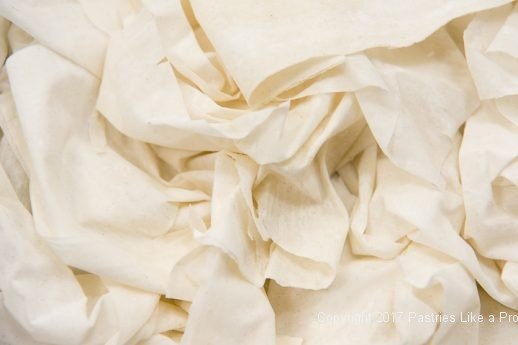
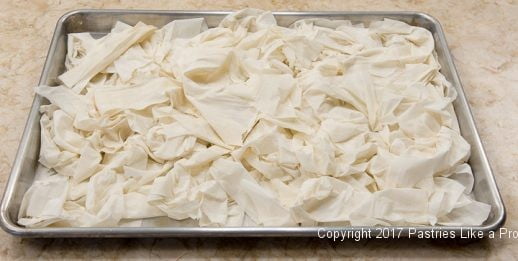
The phyllo available to me came with two individually wrapped inner packages. I separated each leaf, crumpled it slightly and put it on a half sheet. I repeated this for the second package. I dried it for two days, turned the phyllo in each pan over and dried it for two more days. Drying can go much faster in a dry environment - just make sure to turn it over to completely dry it out.It can be spread out in more pans to hurry it along also.
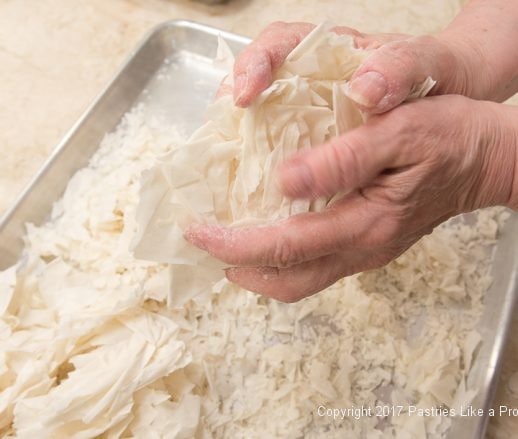
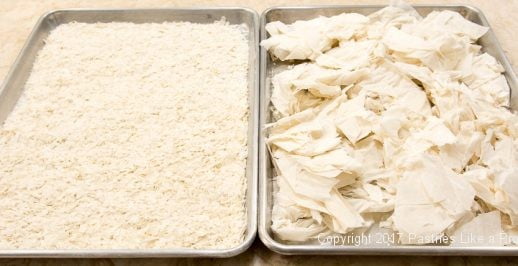
Once dry, it is crushed between your hands to make fine crumbs. It will not look like flour. One of my son's favorites from the phyllo book was Dover sole encrusted in the phyllo crumbs.
Greek Orange Yogurt Cake Soaking Syrup
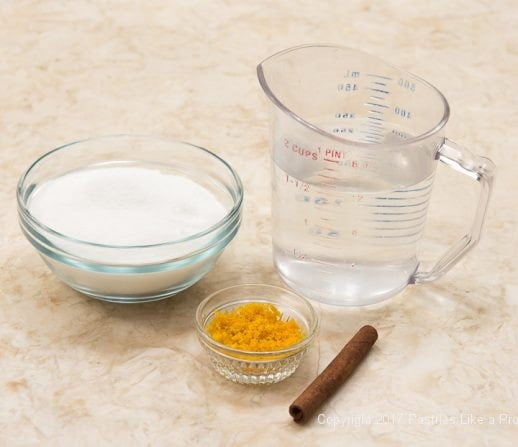
1 ⅔ cup water
1 ⅔ cup sugar (330 grams or 11 ½ ounces)
Zest of 1 large orange
1 cinnamon stick
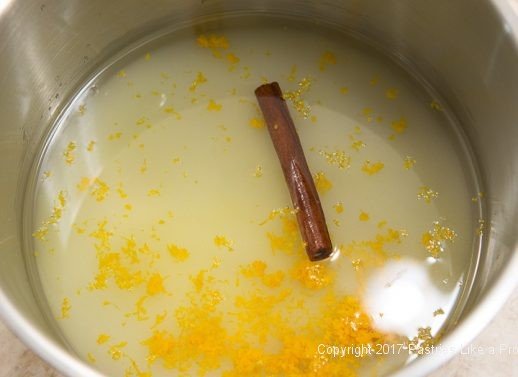
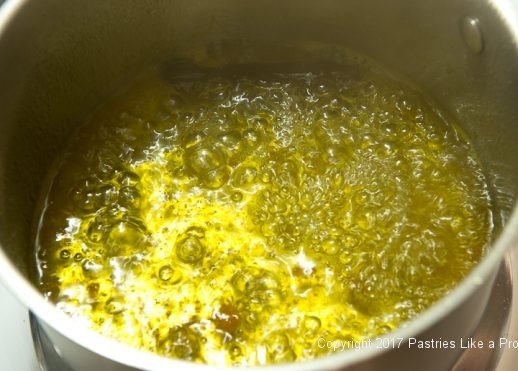
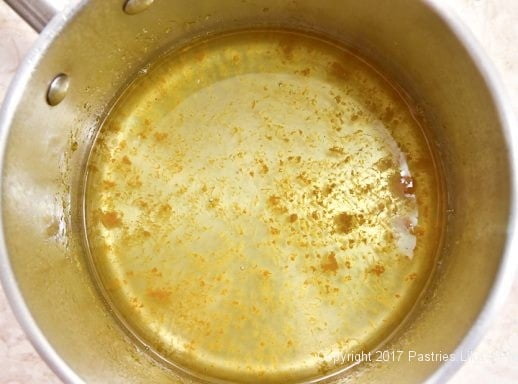
Combine all of the ingredients in a medium saucepan. Bring to a boil and boil for 7 to 10 minutes to reduce slightly. Set aside to cool.
Greek Orange Yogurt Cake
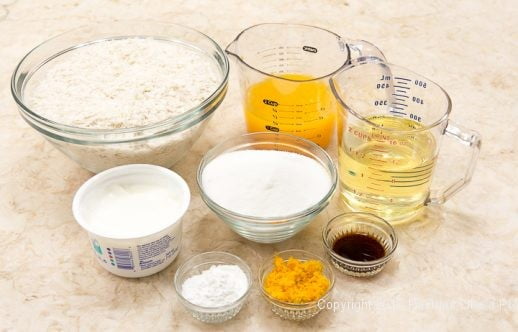
2 large oranges
1 ¼ cup corn oil (I assume olive oil would work here also, but not virgin as it is too strong)
1 ¼ cup sugar (250 grams or 8 ¾ ounces)
7 ounces 2% fat Greek yogurt
Zest from 2 large oranges
1 ¼ cups fresh orange juice from the zested oranges
1 teaspoon vanilla
4 teaspoons baking powder
Preheat the oven to 350°F. Spray the bottom and sides of a 9x13 inch pan. Set aside.
Zest the oranges and set aside.
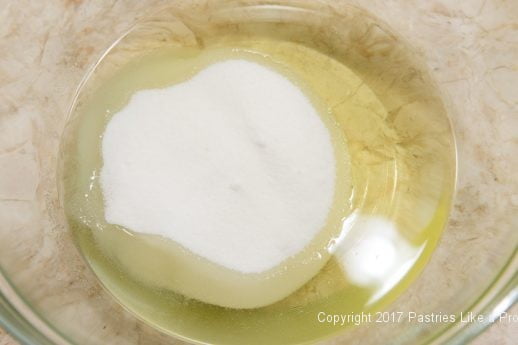
Combine the oil and sugar in a large bowl.
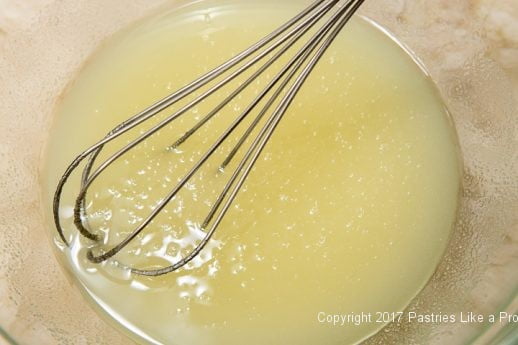
Whisk to combine.
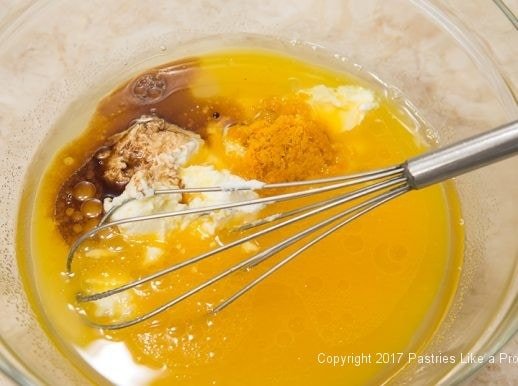
Whisk in the yogurt, orange zest, orange juice and vanilla.
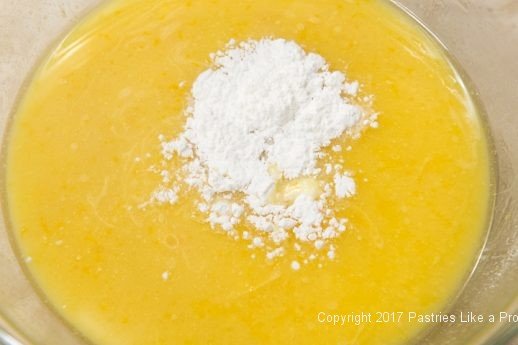
Whisk in the baking powder.
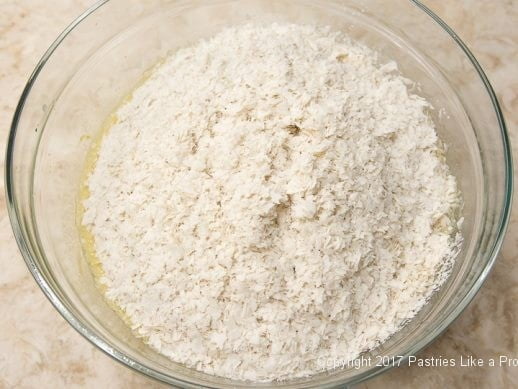
Lastly, whisk in the crushed phyllo.
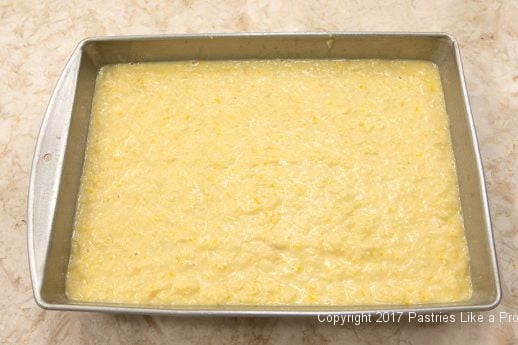
Pour into the prepared pan and smooth out.
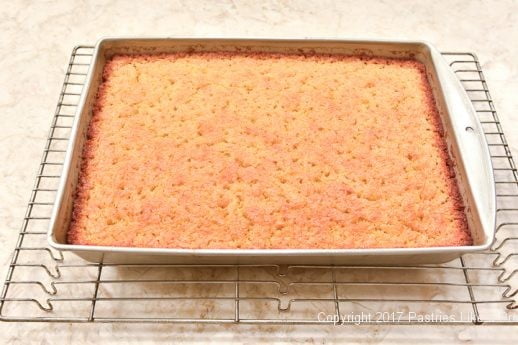
Bake for 38 to 42 minutes until golden brown and a tester comes out clean.
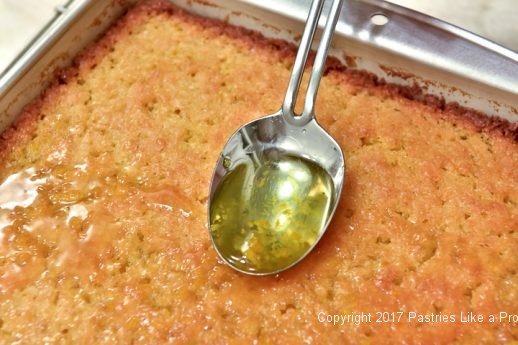
Spoon the cooled syrup over the cake and allow it to sit for several hours or overnight to soak up the sauce.
and allow it to sit for several hours or overnight to soak up the sauce.
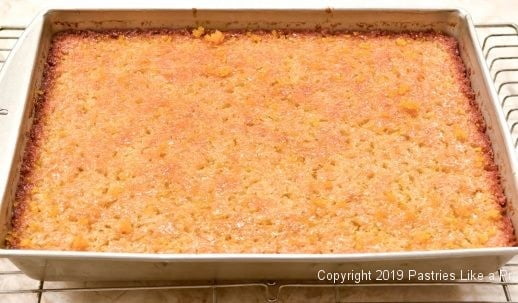
Serve at room temperature or cold with or without fruit for dessert, breakfast or as a snack


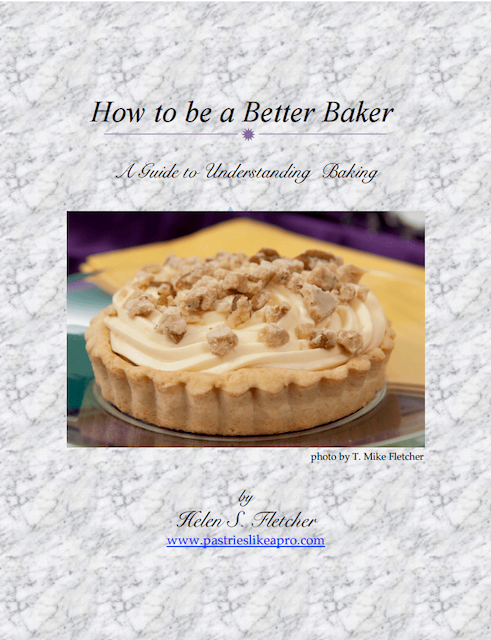

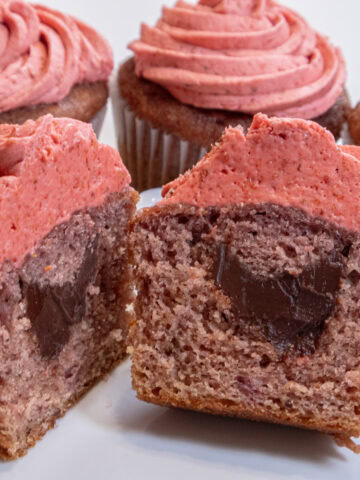

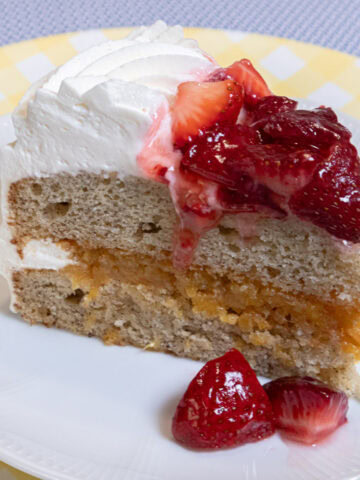
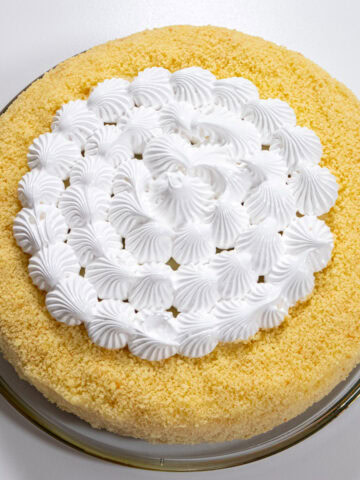
Franklin says
Thanks for posting this. It sounds like the perfect summertime recipe to bring in to a group of colleagues who mostly avoid desserts with fat and too much sugar. I`ll try once I find good oranges and Greek yoghurt.
hfletcher says
Hi Franklin - I agree it is the perfect summertime dessert. Cold or room temperature it's perfect. My husband just asked me to make it again.
sallybr says
This might very well be the most interesting cake in the world! ;-)
I am tempted to try it once I get home from my trip - I miss my kitchen...
so glad you made a nice tutorial about it, it would intimidate me if I was to simply follow a recipe without details.
hfletcher says
Hi, Sally - I can't believe you would be intimidated by anything! Do try it - nothing could be easier as long as you dry your phyllo thoroughly.
Rockyrd says
Too bad no one was interested in a book on phyllo. There are other ones out there. The ones published by phyllo companies are usually too "home ec".
If at first you don't succeed try try again? How about telling us about the fish with the phyllo crumbs. That sounds great.
Now I have to find a place that sells phyllo. I went on line to see if I could order it and have to get a case! That is like a billion layers.
.
Marlyn goldberg says
Sounds so different, I too follow David L. Can't wait to try it. Living in Florida, we have an abundance of oranges and lemons, maybe I could use a combination. Good thoughts
hfletcher says
Hi Marilyn - Absolutely you can use both if you wish. AS I said before, even with all the zest and juice it is not overwhelming orange. David mentioned trying to make it but hasn't so far.
Nikki says
You must have looked in my refrigerator/freezer.
I made 2 spanakopita last week and I have parts of 2 boxes of filo left. About 1 pound.
So I have just found a use for my leftovers.
(I had to put the leftover back in the freezer I just could not toss it out. My frugal New England upbringing that has stayed with me even though I am transplanted to the Mid-West)
I am wondering though could this be made as a Lemon cake not orange with lemon as the predominate flavor? 1 1/2 Cups of lemon juice would be a bit much would you use 1/2 water and 1/2 lemon juice?
hfletcher says
Hi Nikki - glad you have some leftovers. Juice does not carry the flavor that zest does. I don't think it would be too much, but yes you could use some water. Even with all the zest and juice, this is not overwhelmingly over orangey.
rockyrd says
What is the name of the phyllo cookbook?
rockyrd says
That is so unusual and I want to try it as soon as I can get some phyllo. It's not easily available here. I doubt anything could be substituted, could it? Would panko crumbs be a similar consistancy? Not shard like I guess.
Also have you ever tried it in a different sized pan to make it thicker?
Lastly, do you think it came about from having the leaves dry up and being thrifty they made use of it?
That is SO neat!
Nikki says
rockyrd...I have a cake recipe that uses a full box of Vanilla Wafers ground just like this cake uses the filo. It would be worth a try using the panko.
At least that is my opinion. But again I love to "experiment" but I am happy to report I have not killed anyone ..yet with my experimenting.
hfletcher says
Nikki and M.J. The panko is not going to work as will the phyllo. The phyllo when crushed is not hard as is panko. Also, I don't think the panko will absorb the liquid (which is a lot) as will the phyllo. Also, the taste will be completely different. Let me know if you do though so we can pass it along.
hfletcher says
Hi M.J. Nothing is going to give the same texture and taste as phyllo. As I said, there are variations on the internet but they are not authentic. All use flour and most use eggs - they are making a yellow cake. As to the thickness, I have no idea. This is about 1 1/2 inches thick which is about the size of a cake layer.
The book was never published. It seemed no one was interested in a book devoted to phyllo.